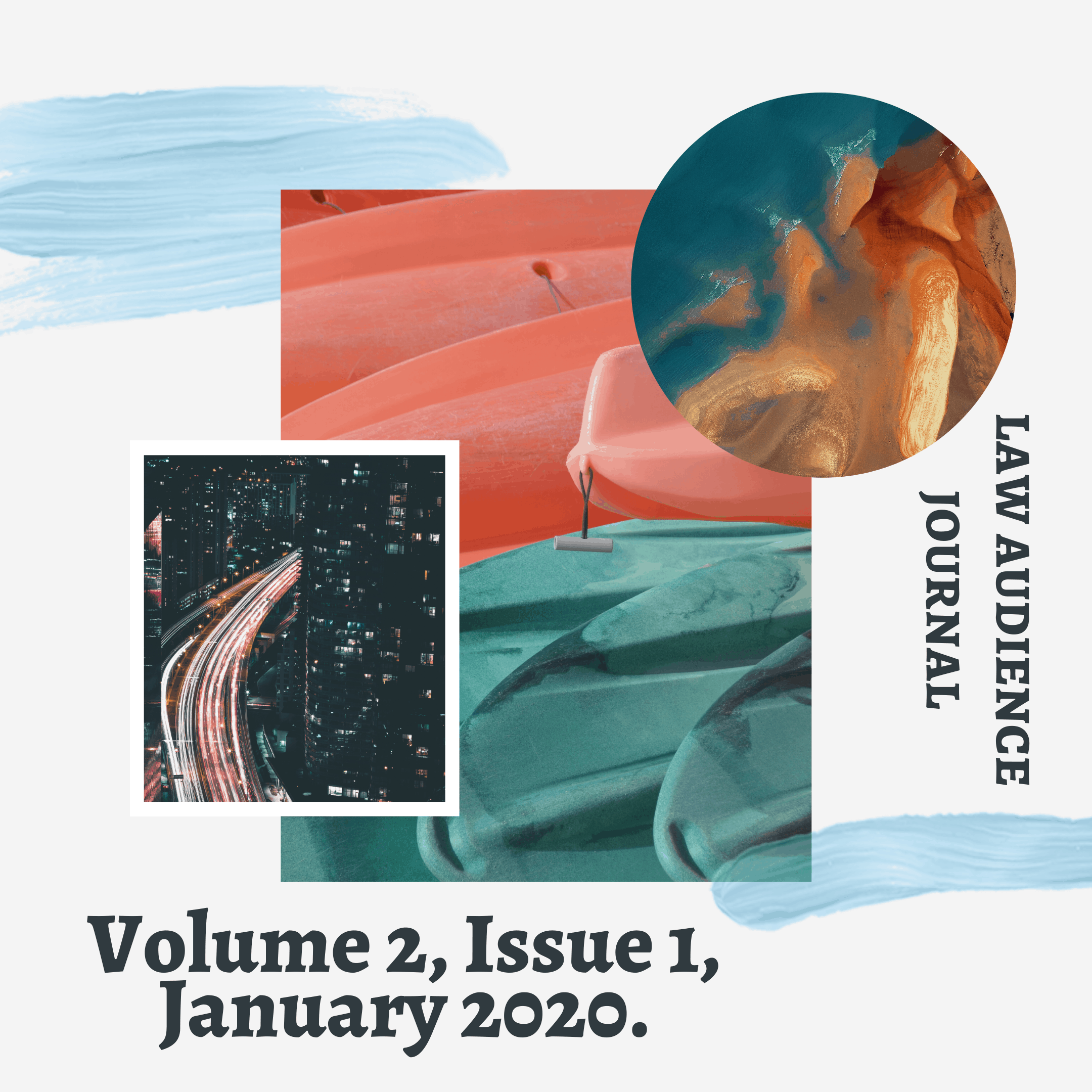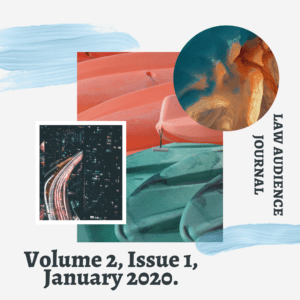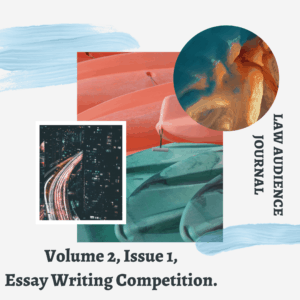Authored By: Ms. Kushi Rajanahalli, Co-Authored By: Mr. Kishan Rajanahalli, Symbiosis Law School, Pune.
I. ABSTRACT:
“Copyright and piracy have consistently been significant drivers of media businesses. Copyright directs authorship and innovation. Progressively, copyright is being utilized to control media technology too. The literature on copyright and piracy is developing relentlessly, to some degree on the grounds that the internet has brought up new issues and carried copyright into the day by day lives of a lot more media creators and buyers.
A much part of the writing on copyright has concentrated on piracy. This article sheds light on online digital piracy and the challenges posed to copyright laws. Particularly since the mid-twentieth century, the system of copyright, and even its presence itself, has been genuinely challenged. These challenges have originated from the attitude of ‘developing countries’, the advent of new innovations, and the consequent changing nature of piracy and private copying.
The viability of lawful measures has all the earmarks of being in uncertainty, with any beneficial outcomes being short-lived. Elective points of view and their suggestions are discussed. Also, the article observes various methods of meeting the challenges to copyright are explored in detail including technological arrangements or ‘fixes’, lawful cures, and instructive programmes.”
II. INTRODUCTION:
Since its commencement, copyright law has responded to technological change. Today, the progressions that are grabbing all the headlines are connected with advanced digital technology and computerized communication systems, for example, the Internet and PCs. These technologies, in the same way as other developments, are both promising and possibly hurtful to different people intrigued by the utilization and misuse of works of authorship from books and music to movies and site pages. There is no uncertainty that the issues identified with accomplishing the correct harmony between these interests considering ongoing improvements are overwhelming and reasonably can be portrayed as “new” or “novel.” But, simultaneously, they are simply one stage in an adventure of ceaseless and fruitful adjustment that describes the historical backdrop of copyright law.
Copyright is a significant intellectual property (IP) right for protection of articulations of the maker of literary, artistic, musical work, cinematograph movie and so on and assumes a significant role in encouraging innovations and creativity. Copyright is a paramount intellectual property worldwide for controlling the duplication of work and furthermore gives IP rights to an individual, class of people, or sorting out parties who are engaged with displaying their work collectively like broadcasters or entertainers. Copyright involves a lot of selective rights conceded to authors, producers, makers, or entertainers relying on the kind of unique work which incorporates the right to duplicate, convey and adapt the work[1]. Copyright accords a bunch of rights to the makers to secure their unique work, for example, right to broadcast, right to display, right to deliver the work, right to replicate the work, right to perform publicly.
The upset in the manner new technology can recreate, spread, and store advanced data, including copyrighted works, is genuinely a twofold edged sword for writers and right-holders. The challenge of copyright in the computerized age is to protect the creator’s and right-holder’s incitement to make new works and utilize new technologies to disperse them to clients and buyers even with a tremendous aggressive danger from the unlawful utilization of innovation by infringers. It likewise includes ensuring that valuable utility of works is not being unnecessarily smothered by a copyright framework rendered wasteful by the development of new technology.
III. PIRACY IN DIGITAL ERA:
Change is the law of nature and procedure of progress is extremely normal; the greatest change in the present time is in the digital domain. In the twentieth century, the security of work by copyright has become a significant test in view of the rise of new class and sort of work, for example, software, music and recordings, and so forth. The related issues in the digital domain are related to the sharing and measure of substance that must be shared. In the computerized era, copyright encroachment can be done requiring little to no effort, effortlessly and furthermore without trading off with the nature of work.
Other than this, major issues that are coming up incorporate phony sites and internet-based business, unlawful downloading of music and videos are probably the greatest concern of this period[2]. Replicating content and presenting another site has become another extortion in the advanced era that makes high-income misfortune the proprietor and an enormous benefit to infringer as each snap on the phony page benefits the infringer.
With the progression in the technology; it has become a challenge to ensure the present social, financial, social improvement in the computerized era and to give answers for the issue emerging by the headway particularly in the distribution of protected material on the internet by earlier available treaties[3]. There are many reasons for encroachment practice yet significantly watched explanation for piracy is the easy utilization of the internet and easy accessibility of the internet. The internet again is accountable for starting business online which is named as e-commerce. Quick speed, simplicity and adaptabilities of digital technology have caused individuals to work online as the data beyond geographical limits can be gathered without any difficulty. Copyrighted material is effectively transmitted and circulated utilizing trend technology around the world using the internet without verification and approval of the proprietor; henceforth there is a genuine requirement for the security of the work with no limits. Digitization has brought an unrest and furthermore has helped individuals for working on the internet as it gives the simplicity to completing business, entertainment and so forth. Advantages of digitization have additionally carried a few burdens with it. The most serious issue experienced in the digital era is piracy.
Piracy of copyright is an issue of an innately triple nature: ideological, legality, and monetary. It might be that one of these viewpoints could prevail contingent upon the edge, the issue is seen from, be it logical, professional, or other. Despite that, they supplement one another, furthermore, are complicatedly woven into the mind-boggling texture of the piracy occurrence This view additionally obtains legitimacy by being completely embraced by noteworthy figures associated with copyright businesses. These three parameters, though overlay on each other, they are perceptible. Consequently, they require a discrete inspection, which will be embraced hereinafter, through substantial literature scrutiny with illustration and insightful tables.
One more issue developing with the digital insurgency is software piracy. Software piracy involves propagation, dispersion and utilization of software. As the product utilized is pilfered and stolen one, subsequently, there is a value climb of the original software for the shoppers and furthermore a high-income misfortune to the real proprietor of software. Piracy of software is done in a few unique manners, for example, downloading of software on the web from distributed systems; pilfered hard plates of software are accessible, replicating of software for which just client has a permit, perusing and afterwards introducing a duplicate of programming software from an individual and introducing it in the wake of entering a similar item key numerous multiple times on a few PCs.
The other rising issue with the appearance of technology is the duplication of the database on the web. It is less bulky to control, replicate and convey the substance accessible on the web and requiring little to no effort which turns into a significant issue in the digital era. The equivalent is the issue with the electronic or digital books which are accessible on the web and are effectively downloadable however the issue comes when these digital books are printed and are auctions off at a lot less expensive rate which prompts a high decrease in the financial to come back to the distributers and writers.
Circulation of PC programs in a large portion of the developed nations happens through a two-layered arrangement of wholesalers and sellers, like that of numerous different ventures. The software distributers make a considerable measure of their shipments to few merchants in some random nation, who keep up well-supplied stockrooms and can react rapidly to orders from hundreds or thousands of individual retail sellers or affiliates. The sellers showcase and give the software products legitimately to end-clients of PCs. The end clients can be people, business undertakings, instructive organizations and government foundations. Now and then, programming distributers likewise manage few the large sellers or affiliates in an individual nation. Authorizing is a typical practice in the software industry. The distributer of software, by and large, approves its end clients through the instrument of the shrink-wrap license contained in the package[4]. A few different issues, for example, counterfeit sites that are the sites with taking after domain name so promotion to these phony sites increments and that advantages the infringer, for instance, various fake shopping sites and so on with comparable area name.
At the point when clients pay cash for purchasing an item on the web and they don’t get any item because of the site being pirated, therefore client faces issue and loses cash as a result of these false sites on the web. The Copyright Act renders assurance to software part just yet website area, swindling on counterfeit shopping sites, don’t go under the ambit of Copyright Act yet are pondered by Cyber Law and IT law.
IV. TACKLING PIRACY:
The immediate washout because of copyright piracy is the rights holders, the prime obligation of securing their copyrights lie with the rightsholders themselves. Initially, the rightsholders should play it safe to ensure copyright works. On the off chance that infringement goes to their notification/information, they should record grievance with the police. They ought to likewise help the police in directing raids and creating proof (for example verification of proprietorship in works) during the preliminary by the court. The law implementation authority like the police should be bestowed appropriate preparing in copyright fields. Aside from disclosing to them how to separate unique copyright items from the pilfered ones, the different aspects of the copyright Act are likewise to be educated.
The enlistment of copyright works might be supported since it is discovered that starting at now not many cases are enrolled. While copyright exists on creation and safeguarding of copyright isn’t dependent upon any custom like the enlistment, enrolling a work builds up possession in a work which, thusly, might be helpful for the correct holders to demonstrate proprietorship in instances of the case. Towards this, Copyright Office may promote their exercises including that of enlistment to the individuals from different affiliations and overall population through various media.
The software copyright holders ought to embrace a corporate permit framework for utilizing a specific software in the spot of ‘one software one PC’ framework. They may consider bringing out low-valued releases of their virtual software for blooming nations like India, to their greatest advantage. Keeping in perspective on expanding significance of intellectual property rights in the nation and the developing conjunction among different constituents of IPR at worldwide levels, the government may consider bringing all offices/bodies concerning the issues of IPR independently under one parasol association.
A committed institution might be set up as a nodal agency to manage matters of copyright and different constituents of IPR, especially relating to education and training. The Indian Institute of Intellectual Property Rights (IIIPR) should offer standard seminars on IPR and sort out important-training programs for all concerned about copyright/IPR like the producers and dealers of copyright items, industry affiliations, the police and people in general at large. In addition, the institution should work in close contact with the government and copyright industry affiliations and provide direction in strategy matters.
V. CONCLUSION:
Society is believed to be the mechanism of economic improvement. With the headway and change in the way of life, which is firmly connected to technological improvement, progression in the technology has made the undertaking for the requirement of copyright security considerably more troublesome. It has now become a test to react to the new improvement in a significant and viable manner. It’s important to keep up a harmony between two extremely significant viewpoints in copyright: encroachment and big-budget implementation, the issue related with the encroachment in copyright is the loss of income and extra cost costs in ineffective prosecution.
There is a substantial necessity to try endeavours concentrating on teaching the customer particularly the more youthful age, to beat the difficulties, for example, duplication and encroachment and furthermore to appreciate the ability and capacity of an individual whose work contributes for social, logical and financial advantages of the general public as an entirety. Besides building up the technology for halting encroachment, it is required to control infringement at a little level for instance, by keeping away from the unlawful appropriation of the downloaded copyrighted material. Other than this, building up the technology in copyright standard can likewise decrease encroachment.
To conclude this article sheds light on piracy under copyright law and confronting private copying and piracy. In spite of the fact that few mechanical measures have been created to control the illicit utilization of the digital content yet at the same time, there is a colossal need of proficient and prepared police power that can pinpoint infringement and can stop it and uphold the legitimate assurance.
[1] Indian Copyright (Amendment) Act, 2012.
[2] Piracy, The Economic times, https://economictimes.indiatimes.com/definition/piracy.
[3] Facelift for Indian Copyright Act, 14 (2010).
[4] N.K Nair, A.K Barman, Utpal Chattopadhyay, Study on copyright piracy in India, MINISTRY OF HUMAN RESOURCE DEVELOPMENT, GOVERNMENT OF INDIA, http://copyright.gov.in/documents/study%20on%20copyright%20piracy%20in%20india.pdf.


